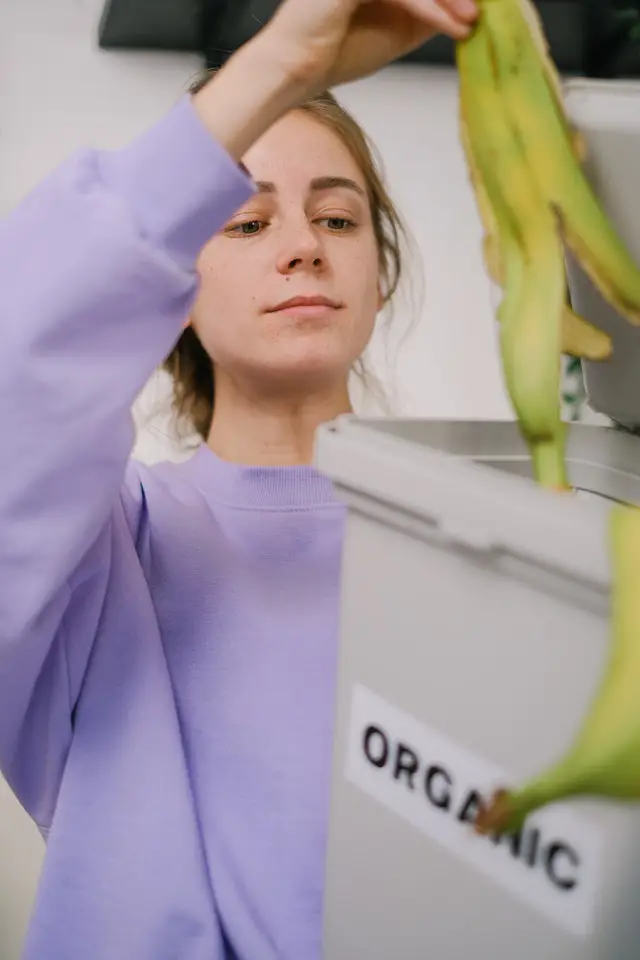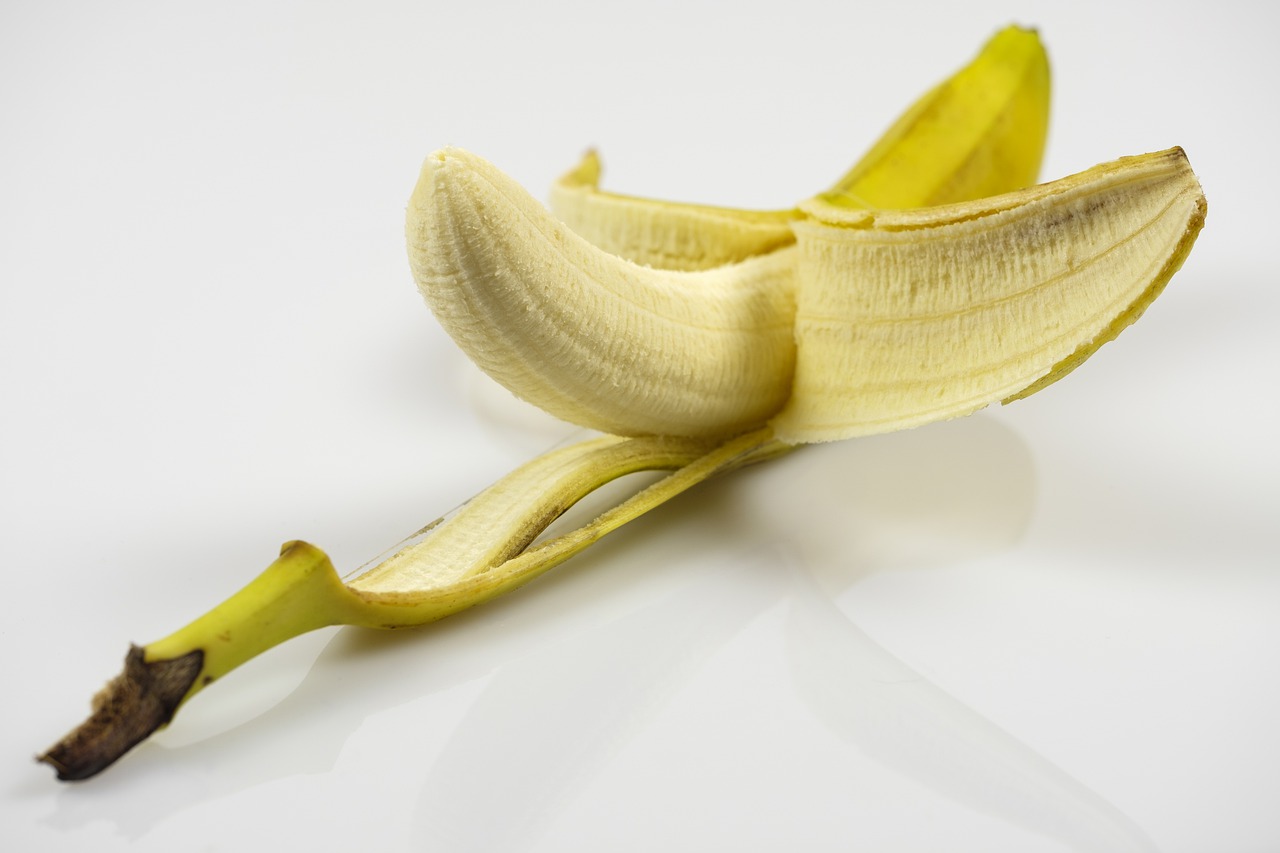Yes, you can use banana peels to make a compost pile. The banana peels will enrich your compost with extra potassium, magnesium, calcium, phosphorus, and, ultimately, your garden plants. Moreover, banana peels improve water retention and aeration of your garden soil.
However, it would be best to consider a few things before composting banana peels.
Table of Contents
Can You Compost Banana Peels?
As a green material, banana peels are a good source of potassium, which is quite essential to any plant.
Aside from potassium, a compost bin of banana peels contains more nutrients such as:
- Magnesium
- Calcium
- Phosphorus
- Sulfur
Such nutrients are helpful, especially for fruiting plants. What’s more, rotting banana peels add organic material to your garden soil which is functional for water retention and aeration.
Are Banana Peels Good For Soil?
Banana peels are excellent material and they have many benefits for your garden soil.
These benefits are listed below:
1. Enriches The Soil
How? In two ways. First, by upgrading the soil’s nutrient holding capacity. Secondly, by improving the soil’s cation exchange capacity (CEC).
For example, banana skins contain calcium, magnesium, and potassium, which diffuse into the soil once they start to rot. The result is healthy crops and a better yield.
However, like any compost, nutrients acquired from banana compost are low compared to synthetic fertilizers. Plus, it’s hard to determine the specific nutrients lacking in the compost.
2. Improves Soil Density
When the soil is hard and tight, you’ll note that plant growth is poor. This is because the roots can’t penetrate through and develop. If this is the case with your garden, bananas are what you need.
Banana leaves increase microbe activity in the soil, which helps to loosen the soil crumbs. Interestingly, banana peels compost also helps clump the soil together if it’s too loose.
3. Improves Water Retention
Banana skins add organic matter to the soil, helping prevent the soil from crusting and increasing the water retention capacity.
With moderate watering, your plants will have plenty of time to take in water.
4. Aphids Love It
Is your garden infested with aphids? Try burying banana peels into the soil as it works wonders. Banana skin has an attractive scent that will draw the aphids away from your plants.
You could also add orange peels to make a better pesticide. Orange peels contain d-limonene, which destroys the aphid’s coat and suffocates them to death.
However, it’s best to use orange peels alone for flowers on potting soil. Why? For beauty purposes, rotting banana peels don’t go well with roses.
Is Banana Peel A Good Fertilizer?
Yes, and by far. One of the most needed minerals for healthy plant growth is potassium. A whole banana peel is 42% potassium, and that’s not the only mineral a banana peel fertilizer offers to your plants:
- Magnesium, which helps in photosynthesis
- Phosphorus helps in flowering and fruiting
- Calcium, which improves root development and aerates the soil; adds oxygen
You can add chopped banana peels directly into the soil; however, the decomposing process can be slow, and you may have to wait a while to see the results.
Alternatively, by making a composting tea, you can avoid the long composting process.
What Is A Banana Peel Compost Tea?
It’s an extract made by mixing small pieces of dry banana leaves with water. It’s a quicker way to boost your plant’s nutrients.
How do you make banana peel compost tea?
First, you need dried banana peels (dried for at least two weeks) and water.
- Step 1. Use a knife to chop the dried peels into smaller pieces or use a blender
- Step 2. Mix a gallon of water with 2 cups of dried banana peels. You can add crushed eggshells into the mixture for more calcium.
- Step 3. Store the mixture for two days.
- Step 4. Sieve the banana leaves with a filter. That is your homemade compost tea. Water the plants at the base and see the results.
Do Banana Peels Attract Ants?
Unfortunately, ants love banana peels, and this is one of the downsides of bananas.
However, ants can help pollinate and promote soil aeration by digging tunnels of air and water. Also, ants can help control damage to your garden by eating eggs and larvae of destructive pests.
If you want to keep ants away from your compost pile, treat your banana peels with a blend of hot pepper and water just before composting.
How to Compost Banana Peels
A balanced compost should provide nitrogen, potassium, and phosphorous. It should also contain both green and brown materials.
However, banana peels have no nitrogen. You must add more green materials such as rhubarb leaves to supply nitrogen.
Here’s a list of the compost materials you need:
- Banana peels, dry or fresh
- Composting bin. A large container will do if you have one
- Some brown materials; dry grass clippings will do, or shredded newspaper
- Water
There are two ways to compost banana peels:
- Through traditional compost, or
- Through vermicomposting
1. Traditional Composting Method
It simply involves heaping the compost materials in a bin and waiting for bacteria and fungi to decompose the heap. Next, the compost generates heat, which helps break down the matter into manure. The whole process takes 6-8 weeks.
Step 1. Break the banana peels into small pieces and add water to moisturize them.
Step 2. Pour the peels and the brown materials in even layers into the composting bin. The sequence should first be brown materials, then the peels from bottom to top.
Step 3. As you add each layer, sprinkle water to make the compost damp.
Step 4. Mix the compost materials; again, ensure the compost is moisturized, and add water if necessary.
Step 5. Seal the bin and wait for 3-4 weeks; the compost will be ready. However, you do need to turn the manure once every week.
2. Vermicomposting
Aside from bacteria and fungi, the main decomposers here are earthworms. They convert the organic materials into nutrients useful for plant growth.
Vermicomposting doesn’t require much space, and what’s more, vermicomposting can be done indoors.
So, how do you vermicompost?
Step 1. Set up a worm bin; you can purchase one, or if you have a 20-gallon container, you’re good to go.
Place the bin in a room with a constant temperature. Place a plastic underneath the bin or suspend it above the floor.
Step 2. Prepare the worm house. Shred some newspapers and spread them evenly at the bottom of the bin. Also, don’t forget to mix the paper shreds with water. Worms prefer moisturized bedding.
Step 3. Add soil into the bin and spread it evenly. Garden soil will do.
Step 4. Add food scraps. Coffee grounds, leaves, cores, and vegetable seeds are excellent choices. Avoid giving the worms dairy products and excess citrus.
Also, remember to remove the fruit stickers before throwing the fruits into the worm bin.
Step 5. Mix the materials, seal the bin for two days, and then add the worms. After that, add about 1/2 pound of food each day. Within six weeks, the compost is ready for harvest.

How Long Does A Banana Peel Take To Turn Into Compost?
A banana peel can take two years to decompose; however, it only takes 3-4 weeks in a compost bin. Chopping the peels into smaller pieces before adding them to the compost can speed up the decomposing process.
It’s also essential to turn the manure at least once a week. Thus helping to aerate the compost and supply the microbes with oxygen to decompose the material faster.
For a banana peel compost tea, 48 hours are enough for it to be ready. However, you have to dry the peels for a week before composting.
Composting Banana Peels: The Takeaway
Next time, before you throw away a banana peel, think for a moment about what that peel can do for your garden soil and plants. First and foremost, banana peels are 42% potassium, one of the important nutrients any plant needs.
Secondly, banana peels can balance the soil’s density, improve water retention, and enrich the soil with organic matter, vital for microbe survival.
But can you compost banana peels? Yes, you can compost banana peels. What’s more, the process is an easy DIY job. You only need those banana peels you’ve thrown into the trash can.

